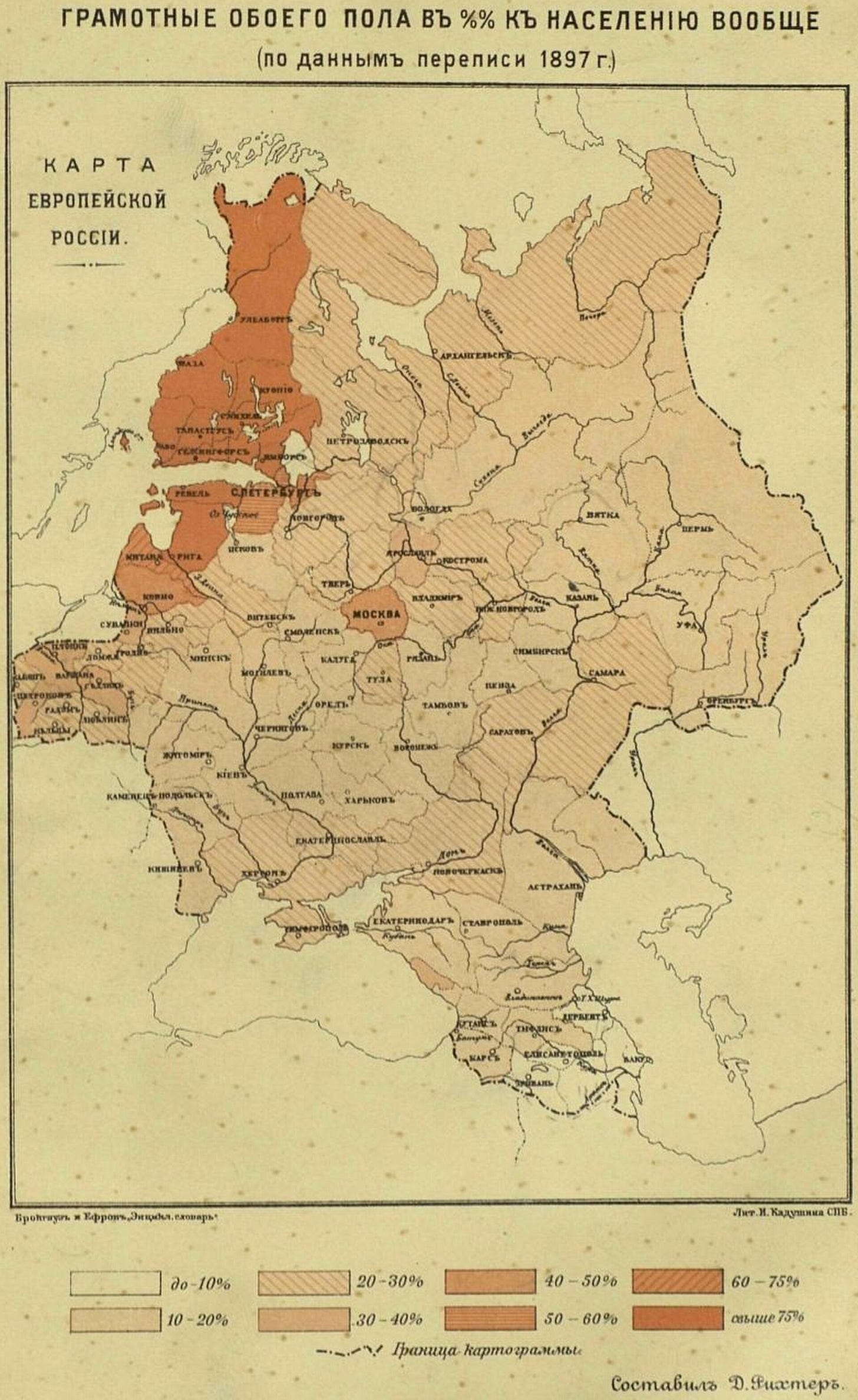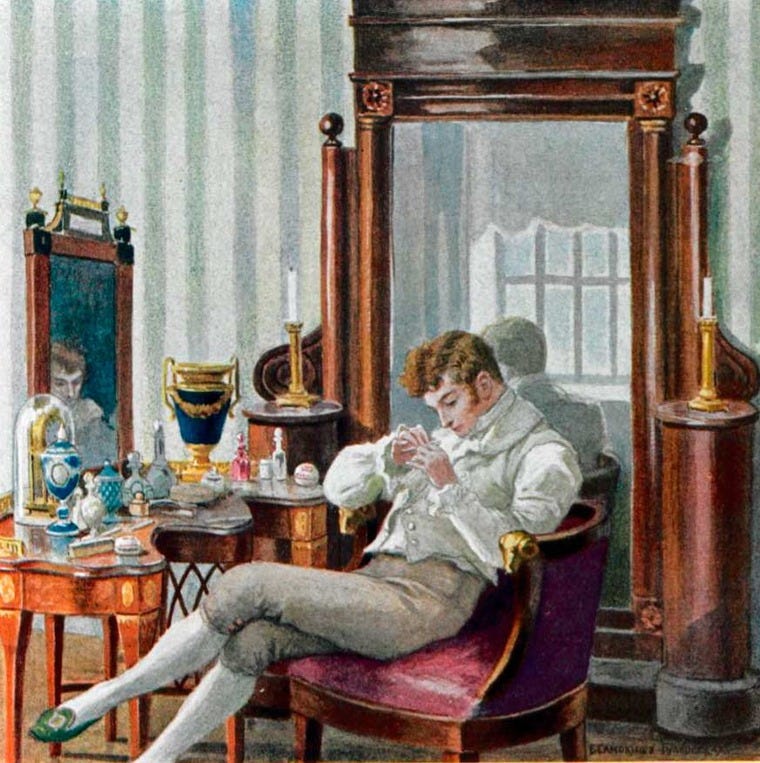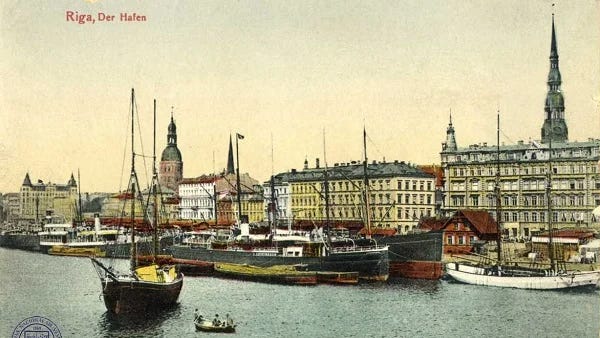Here you see literacy figures for the Russian Empire (European part) based on the 1897 census. The average literacy rate was estimated at about 23%. This figure, however, is hiding a significant discrepancy between the regions.
Obviously, these figures must be taken with a grain of salt
Obviously, the data is imperfect
Obviously, there stands a question of literacy in which language we are counting. Which may be crucial for the multi-cultural society1.
Still, even this imperfect map shows some general patterns of how the ability to read and write was distributed between the regions:
The most literate regions of the Russian Empire are its Protestant provinces, including modern Finland, Estonia & Latvia. The Lutheran countries.
Second most literate area is, roughly speaking, Poland-Lithuania. Catholic regions lagging behind the first group, but still afar everyone else.
Russia proper has only two clusters of high literacy. That is Moscow & St Petersburg. They are surrounded by the vast sea of illiterate peasantry.
This map represents one crucial asymmetry necessary for understanding the history of late Russian Empire, and its revolutionary crisis. That is the gap in human capital between the core of Russian empire and its Western borderland.
To put it in another way, it shows how thin was the civilisation of Russia proper/Central Russia comparatively speaking. We tend to imagine the old, pre-revolutionary Russia, as the world of nobility, balls, palaces and duels. Refined, sophisticated, French-speaking. And that is not wrong, because this world really existed, and produced some great works of art and literature.
What we forget is how thin it was. It existed, but it existed as an island chain of towns and noble estates surrounded by the vast peasant ocean. The distance between peasantry and the educated class was absolutely surreal.
(And the better the soils the worse it was. Peasants were, generally speaking, grain robots, and the better the soil, the better this analogy works)
This may sound somewhat opaque, so let me explain. We tend to romanticise civilisations of grain. We associate them with everything good, with culture, education, achievement. What we forget is that life in a civilisation of grain generally sucks, if not for everyone, then for the vast majority of population.
Russia has been a great civilisation of grain. It maintained a massive imperial machinery, launched victorious wars, fostered the refined noble class and its high culture. All of that came at the enormous cost for the peasantry, both in terms of the actual cost and the missed opportunity, including the one for personal development.
The great majority of Russians were trapped in the grain robot status with hardly any opportunity of escape. Such opportunities were carefully and systematically cut off since the 17th c, through the joint efforts of government and landowning classes.
On the Western border, it was somewhat different. There were many more towns. There were many more commercial, industrial, logistical centres. The sea was very much closer and more accessible. By and large, the Western border had less people trapped as grain robots, and even if you were one, your position was not that hopeless.
While we now envision St. Petersburg as the Russian window to the West, it was actually Riga. The main seaport, the most advanced industrial and technological center of the empire. St. Petersburg did not even have proper access to the sea till the 1880s.
Keep reading with a 7-day free trial
Subscribe to kamilkazani to keep reading this post and get 7 days of free access to the full post archives.






